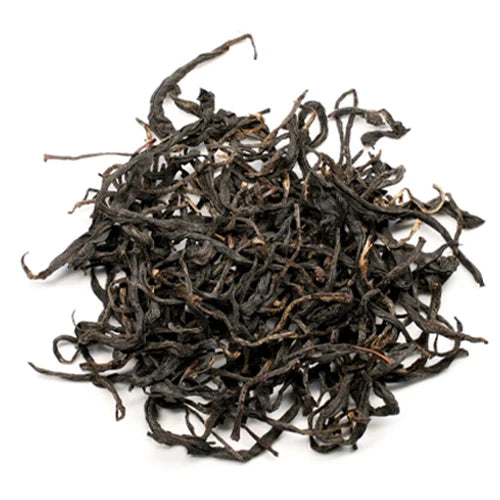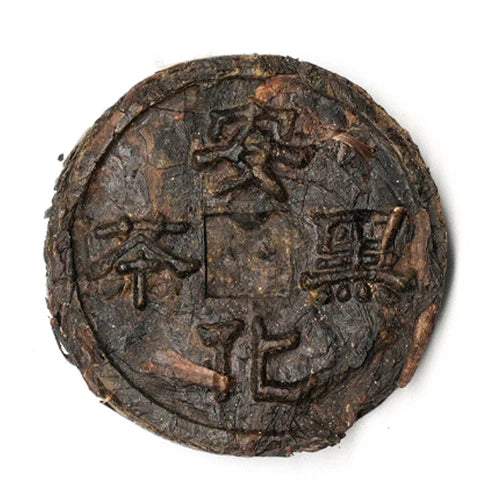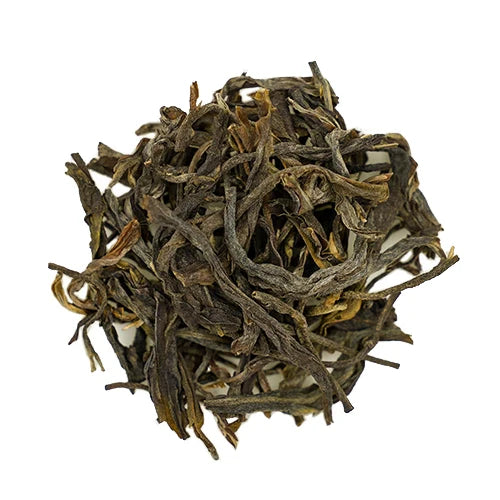If you like tea, you must know about oolong tea.
But how much do you know about oolong tea?
Here is an article that will help you quickly learn more about oolong tea
1.Why is Oolong Tea also known as "Qing Cha"?
Oolong tea is a partially fermented tea that has a greenish-brown hue resembling iron, hence the name "Qing Cha" or Green Tea. Its leaves are green in the middle with red edges, giving it the nickname "green leaf with a red border." Oolong tea combines the best qualities of both black and green teas. It undergoes a process of partial oxidation and is usually made from more mature leaves, giving it a somewhat robust appearance. It's also known as the "slimming tea," aiding in digestion, diuresis, and weight loss. Additionally, oolong tea has strong anti-allergic and anti-cancer properties.
2.Where is the homeland of Oolong Tea?
Fujian province is the birthplace of oolong tea, boasting a rich variety including Tie Guan Yin, Shui Xian, Wuyi Cinnamon, Baozhong, and Golden Osmanthus. Oolong tea, a signature Chinese tea, is primarily produced in Fujian, Guangdong, and Taiwan provinces. The processing technique for oolong is the most complex among the six major tea categories.
3.How is Oolong Tea categorized?
Based on origin and processing methods, Oolong can be classified into Northern Fujian Oolong, Southern Fujian Oolong, Guangdong Oolong, and Taiwanese Oolong. Northern Fujian varieties include Tie Luo Han, Northern Shui Xian, Da Hong Pao, and Wuyi Cinnamon, while Southern Fujian varieties cover Anxi Tie Guan Yin, Ben Shan Oolong, and Golden Osmanthus. Guangdong Oolong includes Fenghuang Dancong, Phoenix Shui Xian, and Lingtou Dancong, while Taiwanese Oolong features Dong Ding Oolong and Wenshan Baozhong.
4.How is Oolong Tea made?
The processing of oolong tea is the most intricate among the major loose leaf tea categories. The basic steps include sunlight withering (or sun drying), indoor withering (or cool drying), shaking, "killing the green," initial rolling, wrapping, and drying. The purpose of withering is to reduce moisture, allowing for proper fermentation. The shaking process creates oolong's unique "green leaf with a red border" appearance and its special aroma. "Killing the green" stops the oxidation, preserving the quality achieved. Rolling shapes the tea and releases its juices, while drying removes excess moisture and bitterness, accentuating the aroma.
5.What are the characteristics of Oolong Tea?
Oolong is known for its "green leaf with a red border," a rich, sweet aftertaste, and a combination of the freshness of green tea and the mellowness of black tea. Drinking oolong offers a unique throaty resonance; Wuyi rock teas provide a "rock resonance," while Anxi Tie Guan Yin has a melodious resonance.
6.Is less stem better for Oolong Tea?
Not necessarily. The presence of stems in oolong tea doesn't mean it's of lesser quality. Oolong tea is usually harvested with two to three leaves, commonly called "open-face plucking." This plucked tea often contains stems, which can enhance the tea's richness. Additionally, if oolong tea is well-aged, it can provide a better aftertaste and more authentic aged aroma. Therefore, the presence of stems isn't a major criterion for evaluating oolong tea's quality.
7.Does Oolong Tea come in many colors?
Yes, depending on its origin and type, oolong tea can vary in color. Its hues range from a bright light yellow to a vibrant orange-yellow and orange-red. Lighter colored dry teas are less fermented, resulting in a paler infusion, whereas darker ones yield a deeper-colored brew.
8.Why should we use boiling water (100℃) to brew Oolong Tea?
Oolong tea is made from matured buds and leaves and generally requires a larger quantity for brewing. The aromatic compounds in oolong are best released at higher temperatures, so boiling water is ideal.
9.What are the three taboos of drinking Oolong Tea?
When enjoying oolong, remember these three prohibitions: avoid drinking it on an empty stomach to prevent feelings of hunger or dizziness; refrain from having it right before bed to ensure a good night's sleep; and don't drink it cold, as this can upset the stomach due to its cold nature.
10.Which tea vessels are suitable for Oolong Tea?
Oolong is best brewed in Yixing clay teapots or covered white porcelain cups. These vessels not only allow one to appreciate its aroma but also retain it. The deep hue of Yixing clay pots particularly complements oolong's aged aroma.








































































